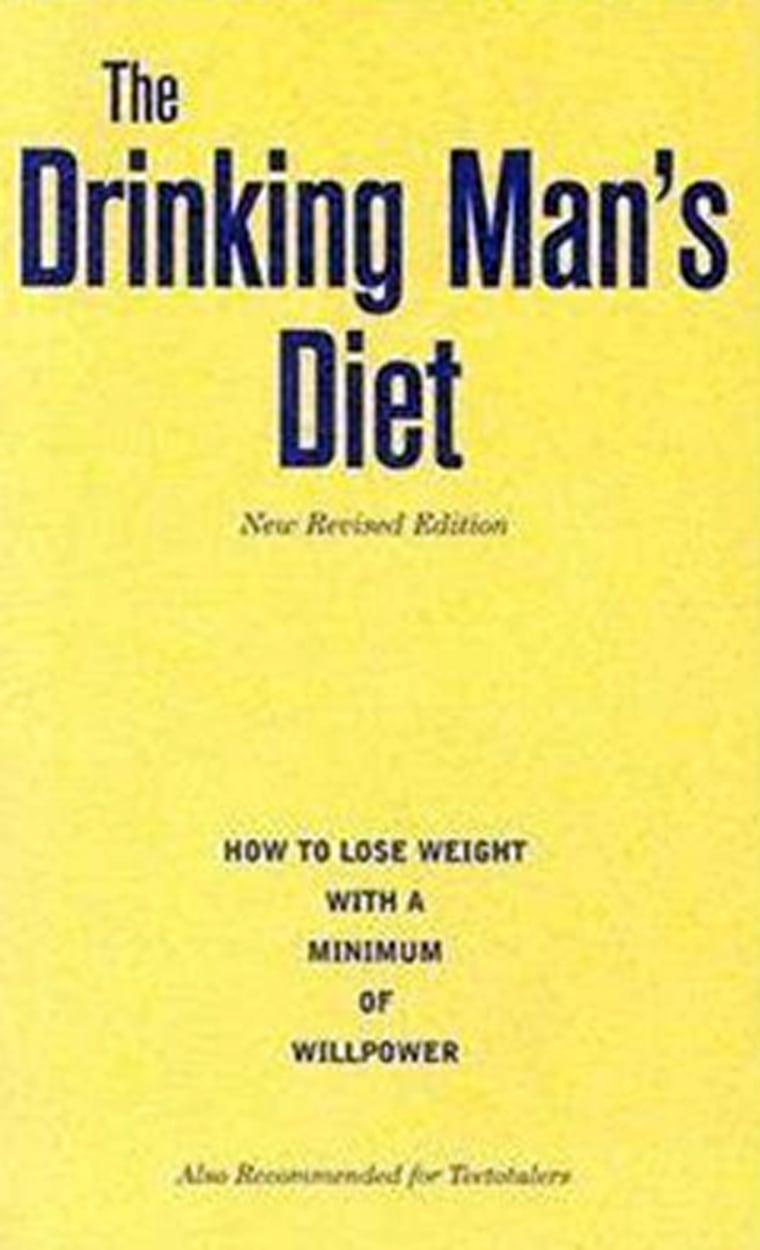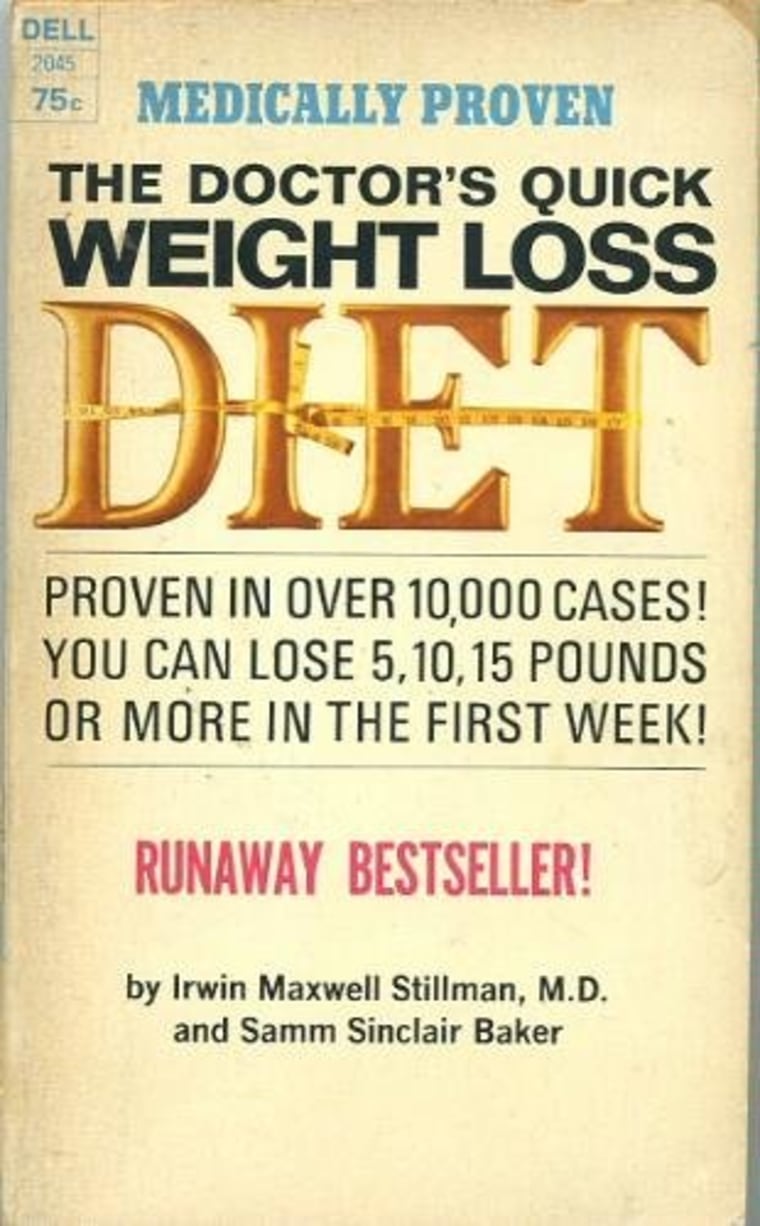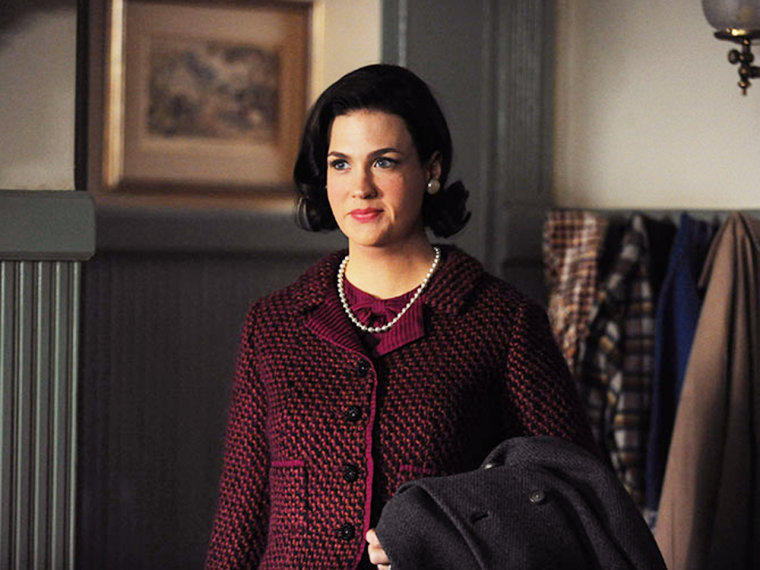It was never very nice of us to call her "Fat Betty," and now it isn't even very accurate. "Mad Men's" Betty Francis has dropped some of the pounds she put on last season, although poor January Jones is still stuck in a (slightly slimmer) fat suit for now.
Last season, we saw our favorite angry housewife attending an early Weight Watchers meeting. But someone like Betty, a trim disciplinarian who suddenly finds herself overweight for the first time in her life, might well be tempted to try one of the era's questionable fad diets, say experts.
(Fad diets exist today, of course, but distance has made '60s diet trends seem so much weirder. Fifty years from now, of course, some poor health writer may be reporting on bizarre diets turn-of-this-century men and women slavishly followed like "eating like a caveman" or "juice cleanses.")
"What's interesting about the '60s is dieting was kind of a solution without a problem, because Americans weren't very heavy," says Susan Yager, an adjunct instructor in the Department of Nutrition, Food Studies and Public Health at New York University. You could call her an American dieting historian: She's the author of "The Hundred Year Diet," a 2010 book chronicling America's love affair with dieting over the last century. Yager explains that in the 1960s, everyone seemed to be following one fad diet or another, but with the obesity rate at about 13 percent in 1962, not many people really needed to. (Compare that figure to 37.5 percent, where the nation's obesity rate stands now.)
"Poor 'fat Betty' ... she didn't have a lot of company," Yager says. "Someone like Betty, especially this beautiful former model ... would've been very unusual in suburban America."

The Drinking Man's Diet. Yager says one of the most popular diet books at the time, and "Betty's best bet," was "The Drinking Man's Diet." The slim volume was just 7 inches tall, 4 inches wide and 60 pages long, and it sold for $1. Robert Cameron, a San Francisco cosmetics executive, self-published the book in 1964.
"The deal with the Drinking Man's Diet is as long as you have no carbs, you can have all the alcohol you want," Yager says. "Alcohol has calories, but, he said, they're not bad calories, they're good calories. And that was wildly popular." The book sold 2.4 million copies within a year of publication. "I wouldn't be surprised if Betty did start that," Yager adds.

Mmm, a glassful of safflower oil. If 1960s dieters weren't knocking back martinis with their meals, they might've been consuming glassfuls of safflower oil, as part of Dr. Herman Taller's plan in his 1961 diet book, "Calories Don't Count." The idea was this: By sticking to a low-carb, very-high-fat diet, you can eat as many as 5,000 calories a day, and still lose weight -- as long as you down 3 ounces of safflower oil with every meal. If you couldn't stomach that, no problem: you were welcome to purchase Taller's safflower oil capsules. Taller's book quickly became a bestseller, and remained one even after the U.S. Food and Drug administration called his claims "false and misleading." After an investigation, in 1967 Taller was found guilty of mail fraud, conspiracy and violating FDA regulations. Even still, the book sold 2 million copies.
Just buttermilk for me, thanks. Dr. Irwin Maxwell Stillman, a family doctor in Brooklyn, N.Y., devised a series of diet plans, each more intense than the last, but all presented in a diet book with the seemingly respectable title, "The Doctor's Quick Weight Loss Diet." One option was the "semi-starvation diet": one hardboiled egg, 8 ounces of milk, 3.5 ounces of salad (no dressing) and eight glasses of water, every day "for as long as you could take it." Or, wouldn't you like to try the buttermilk diet? It's exactly what it sounds like -- six glasses of buttermilk a day, and nothing else. How about the all-meat diet? It's easy: Simply consume a half-pound of meat three times a day. The book was published in 1967 and was followed by a cookbook and three additional weight loss books, making it one of the first diet book franchises. The no-carb, high protein diet was very similar to Atkins, says Marjorie Nolan Cohn, a registered dietitian and a spokeswoman for the Academy of Nutrition and Dietetics, except the Stillman diet was much more strict. "This is why people took to Atkin’s and not this one," she says.
A diet so easy a baby could do it! Millions of "Mad Men"-era dieters guzzled can after can of what was essentially infant formula. Metrecal was first developed as baby formula, and was then used as a nutritional supplement for the very ill. In 1959, some Don Draper-type observed that the drink was also being consumed by people who wanted to "reduce," and thus the product was transformed into a meal replacement option for dieters.
"It caught on tremendously. It became one of the biggest diet crazes of all time," Yager says. Here's a 1965 ad inviting you to join the "Metrecal for lunch bunch" -- don't you dare eat that fatteningfood.
To lose weight with Metrecal, dieters were instructed to consume nothing but four cans of the so-called "milkshake" a day, which added up to a meager 900 calories consumed per day -- so the Metrecal weight loss plan "worked" because dieters were essentially starving themselves. Sounds miserable, but in the mid-'60s, Metrecal was everywhere: "The White House lunch room served it, and Trader Vic's offered a 325-calorie 'lunch,' which was 1.5 ounces of rum mixed with nutmeg, and Metrecal. Perfect for the 'Mad Men' crowd!" Yager quips.

Weight Watchers and more. In 1960s America, groups like Overeaters Anonymous, TOPS (short for Take Off Pounds Sensibly) and Weight Watchers had begun to crop up; Betty attended at least one Weight Watchers meeting in season five. "Some time last year she was measuring out portions of food in the morning -- that was probably the result of Weight Watchers, which was far more stringent in those days," says Yager, who says in the 1960s there were 300 meetups in the New York City area alone. "It wasn't the gigantic corporation it is today ... but it was definitely an option for her."
Less of an option for Betty: Diet pills like prescription amphetamines. Doctors actually did prescribe these for weight loss in the 1930s and after the World War II, "but then there were deaths," Yager says. "So this was not a big time for diet pills."
Another nonstarter for the 60s-era housewife: exercise, at least the way we think of it today, i.e., hitting the gym or running on a treadmill. "There were professional gyms in big cities where serious boxers and other athletes might train, but Betty would never go to one," Yager says. "So Betty could maybe find a small exercise class, but she was more or less on her own."
